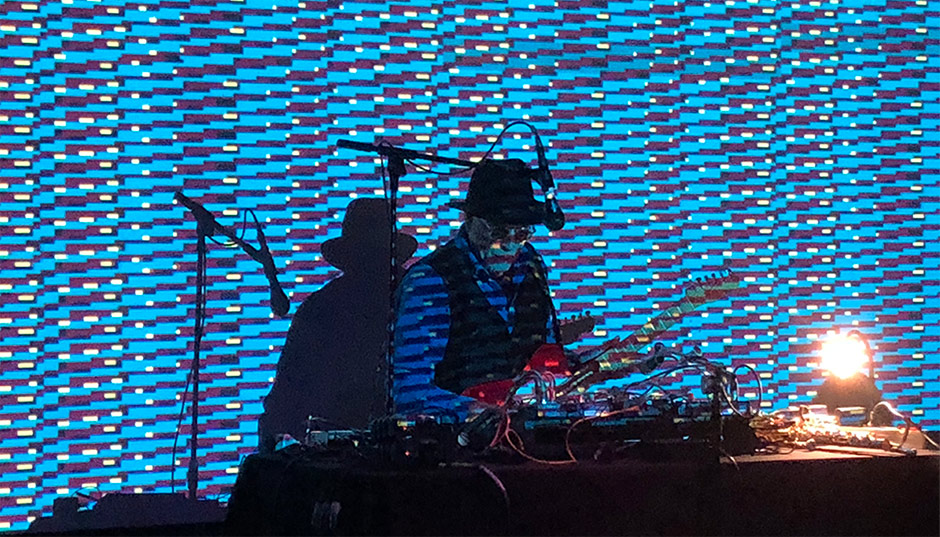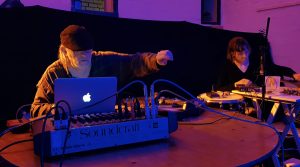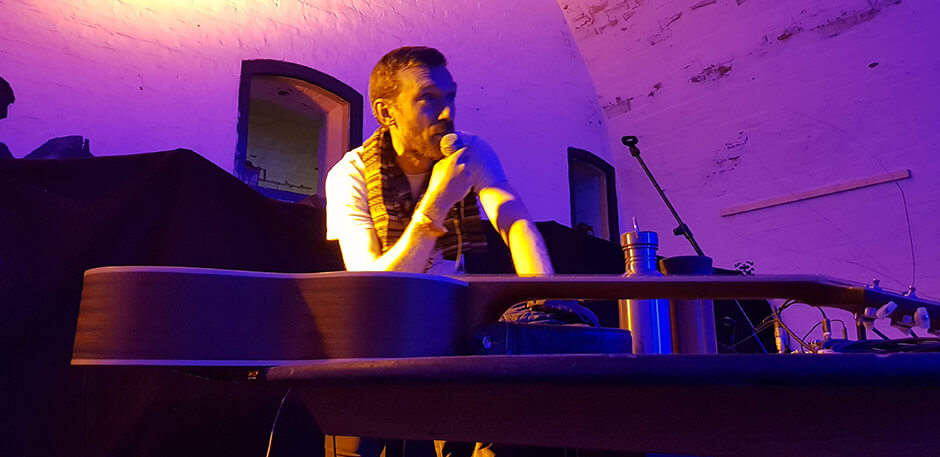Text by CLOT Magazine

On Saturday 22, we got to Newhaven Fort from London. It was a cold and rainy day, but the English weather didn’t make us give up. Newhaven Fort is a fort built in the 19th century to defend the harbour at Newhaven in Sussex, on the south coast of England, and it is now open as a museum.
Every two years is home as well to Fort Process Festival, the one-day sound art and music event curated by Lost Property. For this third edition of the festival, they featured performances, installations, talks, workshops and live art in the unique spaces of Newhaven Fort.
Our highlights from the installation programme include the names of Adam Basanta, Louise MacKenzie and Kathy Hinde and Matthew Olden and Katie McCullum and Karl M V Waugh. Jason Hotchkiss, a Brighton-based noise maker and inventor of electronic kits and devices, presented two installations: Tesla Coil Organ and Chaos Matrix. If we had to choose one, we have to say that we spent a great time making music with the Tesla Coil Organ.
The installation produces high-voltage electrical arcs when playing music with an organ. Kathy Hinde and Matthew Olden’s installations Luminous Birds and Twittering Machines utilise software designed by Olsen. Luminous Birds involves a walk under a long line of origami bird suspended overhead that illuminates and create the illusion of animated flight. On the other hand, Twittering Machines play with birdsong imitations. Humankind has been fascinated with animal communication, and this installation is s step further in understanding animal communication.
Previously featured in CLOT Magazine, Louise Mackenzie presented Tentacular Resonances, a new body of work in which Mackenzie investigates our relationship with lively materials. For Fort Process, she constructed a network of vessels that, when approached, resonated beneath an organ. And finally, we enjoyed Katie McCullum and Karl M V Waugh’s A Conjecture on Space, an interactive artwork blending generative visuals and noise.
The audience was invited to draw to influence the physical rendering of the installation. The installation of the National Grid from Disintegration was another spot-on installation. Sourcing sub-bass sounds from very low frequencies from electricity pylons or main circuits. Audience members interact and play these sounds by simply exploring the auditory space. On this occasion, the installation took an even more eerie turn when interacting with the voices of Voces Castrum.


Ursula Damm is a media artist working at the intersection of art, science and technology. For this year’s Fort Process festival, she presented Transits, a neural network forming a complex system that interprets the daily movement in a city. For Transits, Damm worked with Martin Schneider, who developed the Neurovision framework – ‘a software mimicking the visual system of the human brain to question whether our algorithms meet the well-being of the spectator by anticipating the processing steps of our brain’, she told us.
On the performance side, the persistent rain made us be less adventurous, wandering around the different stages, but we still managed to see a few great gigs. Starting our day with Jez Riley French and Pheobe Riley, who used tape, surface resonance via contact microphones and amplified objects from the fort alongside recent recordings of ensembles resonating buildings from Jez’s ‘salts’ project. A soft interplay of materiality and movement (or gesture). Probably one of the quietest gigs we’ve come to see; the delicacy and granular detail of the sound were otherworldly. It was a contrast to hear the much harsher sounds of Well Hung Game that exploit free jazz, improv and noise in the same room.
Rhys Chatham immersed us in a background of psychedelic patterns and performance of his solo work Pythagorean Dream. Rhys Chatham grounded his musical education on the world of ‘60s New York minimalism, then later found his own direction by mixing this with the raw energy of the downtown No Wave sound. The piece he performed involves phased trumpet and guitar loops, and it’s named after the guitar tuning it employs. He transported us into his spiralling scales and tones with his guitar or the flute.

To finish with David Thomas Broughton, who gave a performance that will remain stuck in our minds for quite a while. We haven’t seen him act or actually heard much about it for a long time. We later heard from the man himself that he’s been in Japan for around 8 years, where he’s kept active, sadly not arriving at our shores.
As past admirers and eager followers of his music, we sat in a cave-shaped room with damp white walls. With a shy scepticism of what he would be doing at the moment, would he be in a good live form, we saw his magic unfold again in an hour that we wish it never had ended. Old songs mixed with new ones, the same style, same lopped and reverbed guitars, percussion and voice show us he’s back and has much to say, even better than 10 years ago. Just pure sonic ecstasy.
We were gutted to miss AJA and Red Hook Grain Terminal (both were performing simultaneously, closing the festival), but sadly we had to attend our train duties to get back to the big city. And on our way back, wet and a bit cold but largely satisfied after another day of intense sonic experience.






